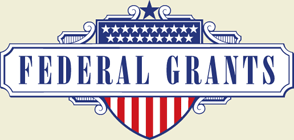Banding Program - NWT
The summary for the Banding Program - NWT grant is detailed below.
This summary states who is eligible for the grant, how much grant money will be awarded, current and past deadlines, Catalog of Federal Domestic Assistance (CFDA) numbers, and a sampling of similar government grants.
Verify the accuracy of the data FederalGrants.com provides by visiting the webpage noted in the Link to Full Announcement section or by contacting the appropriate person listed as the Grant Announcement Contact.
If any section is incomplete, please visit the website for the Fish and Wildlife Service, which is the U.S. government agency offering this grant.
Banding Program - NWT: Background: The United States Fish and Wildlife Service and the Canadian Wildlife Service have had an ongoing duck banding effort In Canada for many years. Numerous ducks are captured and banded at over 20 sites in prairie Canada. The proposed study is to provide students to continue banding ducks at summer breeding grounds. In the past 12 years, students have banded over 100,000 ducks at the banding sites. The objective of this study is to band ducks at summer breeding grounds through participation in the cooperative US - Canada waterfowl banding program. General Statement: Banding and subsequent recoveries of waterfowl, with emphasis on mallards, provide critical management information on harvest rates, age composition, migratory pathway, annual survival, and geographic derivation of the harvest. These data, in conjunction with population surveys and wings collected from hunters, provide the scientific framework for managing populations. It is in the best interest of" managers and the resource to constantly study ways to improve field techniques and reporting requirements in order to maximize field efforts and cost effectiveness of the overall international cooperative waterfowl management program. Addition to, or reduction of, the actual number of technicians is allowed as determined by annual banding program budget allotments.. Field Component: Selected individuals and vendors will be supervised in the field with regard to data processing by a Service employee, and may have to work with local indigenous population on Indian Reservations. Individuals will conduct a waterfowl banding operations at several locations located within various provinces of Canada, to include extremely remote sites in the Northwest Territories. These individuals ultimately will provide a summary report of banding, along with complete data records or all birds banded. The report will contain, at minimum: summary of station conditions (water levels, weather, migration phrenology, etc); banding schedules detailing dates, species, age, sex., banding locations, and band numbers for individual birds banded; summary of banding accomplishments tabulated by species, age, and sex; contacts for station access, inventory of equipment to include the location, amount, and condition of equipment; and any special problems encountered or suggestions for improved operations. Trapping results differ annually based on population levels, water levels, phrenology of seasonal weather, and other factors. However, target numbers for banding are: mallard - 2000, pintail - 1,500, and 1,000 each of other species captured while reaching the mallard banding goal. Ideally, banded samples should be equally divided among males and females, and among adult ("after hatching year"- AHY) and young ("hatching year" -HY or "local" -L) age categories. Trapping will be conducted using 1 x 2" welded wire funnel bait traps baited with wheat or barley. Trapping and banding must be conducted with great care to avoid mortality that can occur because of predation or extremes of weather. The top opening of traps will be covered with fabric mesh to avoid injury to trapped birds. If predation occurs at a trap site, the trap will be moved and the site abandoned unless effective preventative measures can be implemented. Adequate floats will be installed in each trap so that captured birds can leave the water to preen, and thus avoid becoming waterlogged. If any birds become soaked or muddy, they will be released without banding; the circumstances giving rise to this situation will be remedied immediately.
| Federal Grant Title: | Banding Program - NWT |
| Federal Agency Name: | Fish and Wildlife Service |
| Grant Categories: | Natural Resources Science and Technology |
| Type of Opportunity: | Discretionary |
| Funding Opportunity Number: | WCCBP019 |
| Type of Funding: | Cooperative Agreement Grant |
| CFDA Numbers: | 15.655 |
| CFDA Descriptions: | Migratory Bird Monitoring, Assessment and Conservation |
| Current Application Deadline: | Jun 19, 2009 |
| Original Application Deadline: | Jun 19, 2009 |
| Posted Date: | Jun 01, 2009 |
| Creation Date: | May 29, 2009 |
| Archive Date: | Jul 19, 2009 |
| Total Program Funding: | $19,500 |
| Maximum Federal Grant Award: | $19,500 |
| Minimum Federal Grant Award: | $18,000 |
| Expected Number of Awards: | 1 |
| Cost Sharing or Matching: | No |
- Applicants Eligible for this Grant
- State governments - County governments - City or township governments - Special district governments - Native American tribal governments (Federally recognized) - Native American tribal organizations (other than Federally recognized tribal governments)
- Grant Announcement Contact
- Sheldon Mixon Program Support Assistant Phone 301-497-5881
Banding Program - NWT [[email protected]] - Similar Government Grants
- • F23AS00117 Webless Migratory Game Bird Program 2023
- • Webless Migratory Gamebird Program Notice of Funding Opportunity - Fiscal Year 2021
- • Pacific Brant mid-winter ground survey in Mexico
- • Migratory Bird Monitoring, Assessment and Conservation
- • Western Canada Cooperative Banding Program
- • Migratory Bird Project Support: Monitoring, Assessment, Conservation
- • Migratory Bird Project Support: Monitoring, Assessment, Conservation of Red Knots
- More Grants from the Fish and Wildlife Service
- • F24AS00309 FY2024 Latin America Regional Program
- • F25AS00008 - NAWCA 2025 Canada Grants
- • F25AS00007 Multistate Conservation Grant Program Announcement
- • Invasive Species Eradication Funding Opportunity
- • National Fish Passage Program Base Funding Fiscal Year 2024
